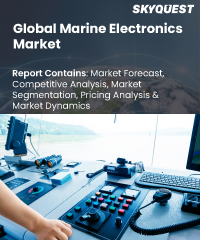
Report ID: SQMIG20T2011

Report ID:
SQMIG20T2011 |
Region:
Global |
Published Date: September, 2024
Pages:
202
|
Tables:
62 |
Figures:
77
Drivers
The leisure boating sector has witnessed substantial growth, fueled by rising disposable incomes, tourism, and a growing interest in outdoor recreational activities. Marine electronics, such as GPS devices, chart plotters, and fish finders, enhance the safety and navigation capabilities of recreational boats, providing boaters with features like route planning, real-time weather updates, and fish detection. This has led to increased adoption of marine electronics in the recreational boating market.
Governments and regulatory bodies across the world have implemented stringent safety regulations to ensure the security of marine operations. These regulations mandate the use of certain electronic equipment on vessels to enhance safety and prevent accidents. For instance, the International Maritime Organization (IMO) requires ships to be equipped with various navigation and communication systems, including radar, AIS, and emergency position-indicating radio beacons (EPIRBs), which contribute to the demand for marine electronics.
Restraints
The installation and maintenance of marine electronics can be complex and require skilled professionals. The integration of various systems, wiring, and calibration can be time-consuming and challenging, especially in larger vessels or complex marine environments. Additionally, the harsh marine conditions, including exposure to saltwater, humidity, and vibration, can result in increased maintenance requirements and costs. The complexity and maintenance challenges can deter some potential buyers from investing in marine electronics.
Our industry expert will work with you to provide you with customized data in a short amount of time.
REQUEST FREE CUSTOMIZATIONWant to customize this report? This report can be personalized according to your needs. Our analysts and industry experts will work directly with you to understand your requirements and provide you with customized data in a short amount of time. We offer $1000 worth of FREE customization at the time of purchase.

Report ID: SQMIG20T2011